(!)Due to Microsoft's end of support for Internet Explorer 11 on 15/06/2022, this site does not support the recommended environment.
63,000 Stock items for Same Day Shipping
63,000 Item Stok untuk Pengiriman di Hari yang Sama
Search by Category / Brand
Pencarian dengan
Kategori / Merek
Search by Category Pencarian dengan Kategori
- Automation Components
A wide variety of standard and configurable components for factory automation engineers in industries such as automotive, semiconductor, packaging, medical and many more.
- Linear Motion
- Rotary Motion
- Connecting Parts
- Rotary Power Transmission
- Motors
- Conveyors & Material Handling
- Locating, Positioning, Jigs & Fixtures
- Inspection
- Sensors, Switches
- Pneumatics, Hydraulics
- Vacuum Components
- Hydraulic Equipment
- Discharging / Painting Devices
- Pipe, Tubes, Hoses & Fittings
- Modules, Units
- Heaters, Temperature Control
- Framing & Support
- Casters, Leveling Mounts, Posts
- Doors, Cabinet Hardware
- Springs, Shock Absorbers
- Adjusting, Fastening, Magnets
- Antivibration, Soundproofing Materials, Safety Products
- Fasteners
A good selection of accessories such as screws, bolts, washers and nuts that you may need for your daily engineering usage.
- Materials
Browse industrial materials ranging from heat insulating plates, sponges, to metal and plastic materials in different sizes to meet your various applications.
- Wiring Components
A wide variety of wiring parts for connecting and protecting control and PC parts including Connectors, Cables, Electric Wires, Crimping Terminals and more.
- LAN Cables / Industrial Network Cables
- Cables by Application
- Cables with Connectors
- RS232 / Personal Computers / AV Cables
- Wires/Cables
- Connectors (General Purpose)
- Crimp Terminals
- Zip Ties
- Cable Glands
- Cable Bushings/Clips/Stickers
- Screws/Spacers
- Cable Accessories
- Tubes
- Protection Tubes
- Ducts/Wiremolds
- General Purpose Tools
- Dedicated Tools
- Soldering Supplies
- Electrical & Controls
A wide variety of controls and PC parts for electrical engineers including Controls, Powers, PC parts and more.
- Cutting Tools
A wide variety of cutting tools for many uses and work materials including End Mills, Drills, Cutters, Reamers, Turning Tools and more.
- Carbide End Mills
- HSS End Mills
- Milling Cutter Inserts/Holders
- Customized Straight Blade End Mills
- Dedicated Cutters
- Turning Tools
- Drill Bits
- Screw-Hole-Related Tools
- Reamers
- Chamfering / Centering Tools
- Fixtures Related to Cutting Tools
- Step Drills
- Hole Saws
- Clean Key Cutters
- Core Drills (Tip Tools)
- Magnetic Drilling Machine Cutters
- Drill Bits for Electric Drilling Machines
- Woodworking Drill Cutters
- Drills for Concrete
- Processing Tools
A wide variety of tools and supplies used in processing including Machine Tools, Measurement Tools, Grinding and Polishing Supplies and more.
- Material Handling & Storage
A wide variety of goods used in shipment, material handling and warehouse including Tape supplies, Stretch film, Truck, Shelf, Crane and more.
- Tape Supplies
- Cushioning Materials
- Stretch Films
- Cardboard
- Plastic Bags
- PP Bands
- Magic Tapes / Tying Belts
- Rubber Bands
- Strings/Ropes
- Cable Ties
- Tags
- Labelers
- Unpacking Cutters
- Packing Support Equipment
- Cloth Sheets for Packing
- Conveyance/Dolly Carts
- Tool Wagons
- Tool Cabinets / Container Racks
- Lifters / Hand Pallets
- Container Pallets
- Storage Supplies
- Shelves/Racks
- Work Benches
- Suspended Clamps/Suspended Belts
- Jack Winches
- Chain Block Cranes
- Bottles/Containers
- Bicycle Storage Area
- Safety & General Supplies
A large variety of goods for every kind of factories and offices including Protection items, Cleaning supplies, sanitations, office supplies and more.
- Lab & Clean Room Supplies
A large variety of items used in R&D and Clean Room including research Equipment, Laboratory Essentials, Analysis Supplies, Clean Environment-Related Equipment and more.
- Press Die Components
Choose from thousands of standard stamping die components including Punch & Die, Gas Springs, Guide Components, Coil Springs and many more.
- Plastic Mold Components
Browse our wide variety of mold components including Ejector Pins, Sleeves, Leader Components, Sprue Bushings and many more.
- Ejector Pins
- Sleeves, Center Pins
- Core Pins
- Sprue bushings, Gates, and other components
- Date Mark Inserts, Recycle Mark Inserts, Pins with Gas Vent
- Undercut, Plates
- Leader Components, Components for Ejector Space
- Mold Opening Controllers
- Cooling or Heating Components
- Accessories, Others
- Components of Large Mold, Die Casting
- Injection Molding Components
Browse our injection molding components including Heating Items, Couplers, Hoses and more.
- Injection Molding Machine Products
- Accessories of Equipment
- Auxiliary Equipment
- Air Nippers
- Air Cylinders
- Air Chuck for Runner
- Chuck Board Components
- Frames
- Suction Components
- Parallel Air Chuck
- Special Air Chuck
- Chemical for Injection Molding
- Mold Maintenance
- Heating Items
- Heat Insulation Sheets
- Couplers, Plugs, One-touch Joints
- Tubes, Hoses, Peripheral Components
- Komponen Mekanis
- Linear Motion
- Rotary Motion
- Connecting Parts
- Rotary Power Transmission
- Motors
- Conveyors & Material Handling
- Locating, Positioning, Jigs & Fixtures
- Inspection
- Sensors, Switches
- Pneumatics, Hydraulics
- Vacuum Components
- Hydraulic Equipment
- Discharging / Painting Devices
- Pipe, Tubes, Hoses & Fittings
- Modules, Units
- Heaters, Temperature Control
- Framing & Support
- Casters, Leveling Mounts, Posts
- Doors, Cabinet Hardware
- Springs, Shock Absorbers
- Adjusting, Fastening, Magnets
- Antivibration, Soundproofing Materials, Safety Products
- Sekrup, Baut, Washer, Nut
- Material
- Komponen Kabel
- LAN Cables / Industrial Network Cables
- Cables by Application
- Cables with Connectors
- RS232 / Personal Computers / AV Cables
- Wires/Cables
- Connectors (General Purpose)
- Crimp Terminals
- Zip Ties
- Cable Glands
- Cable Bushings/Clips/Stickers
- Screws/Spacers
- Cable Accessories
- Tubes
- Protection Tubes
- Ducts/Wiremolds
- General Purpose Tools
- Dedicated Tools
- Soldering Supplies
- Elektrikal & Kontrol
- Peralatan Pemotong
- Carbide End Mills
- HSS End Mills
- Milling Cutter Inserts/Holders
- Customized Straight Blade End Mills
- Dedicated Cutters
- Turning Tools
- Drill Bits
- Screw-Hole-Related Tools
- Reamers
- Chamfering / Centering Tools
- Fixtures Related to Cutting Tools
- Step Drills
- Hole Saws
- Clean Key Cutters
- Core Drills (Tip Tools)
- Magnetic Drilling Machine Cutters
- Drill Bits for Electric Drilling Machines
- Woodworking Drill Cutters
- Drills for Concrete
- Peralatan Produksi
- Penanganan Material & Penyimpanan
- Tape Supplies
- Cushioning Materials
- Stretch Films
- Cardboard
- Plastic Bags
- PP Bands
- Magic Tapes / Tying Belts
- Rubber Bands
- Strings/Ropes
- Cable Ties
- Tags
- Labelers
- Unpacking Cutters
- Packing Support Equipment
- Cloth Sheets for Packing
- Conveyance/Dolly Carts
- Tool Wagons
- Tool Cabinets / Container Racks
- Lifters / Hand Pallets
- Container Pallets
- Storage Supplies
- Shelves/Racks
- Work Benches
- Suspended Clamps/Suspended Belts
- Jack Winches
- Chain Block Cranes
- Bottles/Containers
- Bicycle Storage Area
- Perlengkapan Keamanan & Umum
- Perlengkapan Sanitasi & Lab
- Komponen Press Die
- Komponen Plastik Mold
- Ejector Pins
- Sleeves, Center Pins
- Core Pins
- Sprue bushings, Gates, and other components
- Date Mark Inserts, Recycle Mark Inserts, Pins with Gas Vent
- Undercut, Plates
- Leader Components, Components for Ejector Space
- Mold Opening Controllers
- Cooling or Heating Components
- Accessories, Others
- Components of Large Mold, Die Casting
- Komponen Injeksi Moulding
- Injection Molding Machine Products
- Accessories of Equipment
- Auxiliary Equipment
- Air Nippers
- Air Cylinders
- Air Chuck for Runner
- Chuck Board Components
- Frames
- Suction Components
- Parallel Air Chuck
- Special Air Chuck
- Chemical for Injection Molding
- Mold Maintenance
- Heating Items
- Heat Insulation Sheets
- Couplers, Plugs, One-touch Joints
- Tubes, Hoses, Peripheral Components
Search by Brand Pencarian dengan Merek
This translation is a Google translation Terjemahan ini adalah terjemahan Google
- Sehubungan dengan adanya Peraturan Baru Kementerian Perdagangan No.36 Tahun 2023 tentang Pembatasan Impor Barang, MISUMI Indonesia melakukan tindakan pencegahan. Lihat informasi detailnya di sini
Due to New Regulation of Ministry Of Trade No.36 of 2023 concerning retrictions on imports of goods, MISUMI Indonesia do precautions measure. See detail information here - Nomor telepon alternatif Kontak Layanan Pelanggan : 021-29182911| 021-29182991 | 021-29182997 | 021-29182998
Alternative telephone number Contact Customer Service: 021-29182911 | 021-29182991 | 021-29182997 | 021-29182998
Flat Belts For Sliding

Flat Belts For Sliding
This conveyor belt is ideal for use in both sliding transfer and mini belt conveyor systems, with a wide range of sizes available to choose from.
[Feature]
● Belt Width Minimum / Maximum (mm.) : 10 mm. and 500 mm. (can be increased by increments 1 mm.)
● Thickness Minimum/ Maximum (mm.): 0.5 and 1.2
● Belt Length (m.) : The size is configurable between 0.7 to 20 m., and the minimum length can be increased by increments 0.01 m.
● Surface Cover Polyester Impregnated Woven Cloth
● Color: Green and White
[Application]
It is used in conjunction with pulleys to transfer materials in a conveyor system.
Part Number
Configured Part Number is shown.
Product Overview of Conveyor Belt
Product Feature of Conveyor Belt
For general use: suitable for general conveying purposes of food packaging, cardboard boxes, metal, and plastic, etc.
For electronic parts of Conveyor Belt: anti-static specifications, suitable for the transmission of anti-static electronic parts. The surface resistivity value is 10⁶~10⁸Ω.
For sliding of Conveyor Belt: canvas with sliding performance in longitudinal direction is used to make the conveying objects stay and be arranged above the belt.
For conveying bulk materials of Conveyor Belt: The surface is of textured shape, which can be used in horizontal transportation of bulk objects.
 |  |  |  | 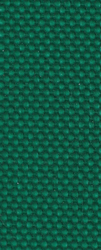 |  | 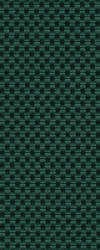 | 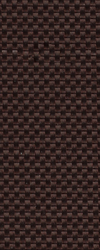 | |||||||
| For general use of Conveyor Belt | For general use of Conveyor Belt | For general use of Conveyor Belt | For electronic parts of Conveyor Belt | For sliding of Conveyor Belt | For sliding of Conveyor Belt | For conveying bulk materials of Conveyor Belt | For conveying bulk materials of Conveyor Belt |
Feature of Conveyor Belt 2: Can prevent both sides of the belt from being raised
For 1 layer of flat belt, the back is made of weaving with stronger rigidity to effectively prevent the belt from being raised on both sides. * Problems of products circulating on the market.
Feature of Conveyor Belt 3: more layers and types are available
 The results of MISUMI Conveyor Belt installation test are for reference only.
The results of MISUMI Conveyor Belt installation test are for reference only. Dimensional Drawing of Conveyor Belt

Specifications Overview of Conveyor Belt
| Type of Conveyor Belt |  Material Material | Color | Surface Shape | Number of Layers | Thickness mm | Minimum pulley diameter Φmm | Allowable tension N/mm | Unit weight kg/㎡ | Coefficient of friction (reference value for ground steel) | Knife edge | Continuous Operating Temperature °C | ||
| Surface | Rear | Surface | Rear | ||||||||||
| CFBSG | Urethane impregnated | Polyester canvas | Green | Flat Surface | 1 | 0.5 | 10 | 4 | 0.3 | 0.2 | 0.1 | R4 | -20~80 |
| CFBSWD | White | 2 | 1.2 | 20 | 6 | 1.2 | 0.2 | 0.1 | R5 | ||||
 The permanent stretch rate of the Conveyor Belt is 1% relative to the total length. (Reference value)
The permanent stretch rate of the Conveyor Belt is 1% relative to the total length. (Reference value) At the time of shipment, fitting processing has been performed on the ribbon belt.
At the time of shipment, fitting processing has been performed on the ribbon belt. Set the inner diameter as the circumference length.
Set the inner diameter as the circumference length. Please select the pulley model after confirming the width tolerance between the pulley and the idler.
Please select the pulley model after confirming the width tolerance between the pulley and the idler.| Width (mm) | Tolerance |
| ~100 | ±1 |
| 101~400 | ±1 |
| 401~500 | ±1.5 |
| Thickness (mm) | Tolerance | Fitting Part Tolerance |
| ~1.0 | ±0.1 | ±0.3 |
| 1.1~1.5 | ±0.2 |
| Length (mm) | Tolerance |
| ~2000 | ±10 |
| 2001~7000 | ±20 |
| 7001~10000 | ±0.3% |
| 10001~ | ±0.3% |
Usage Method of Conveyor Belt
The suitable tension force of the flat belt depends on the structure of the conveyor, material, the weight of the goods, etc., so it can not be determined as a few percent.
Please do not over-tension as it is permanently tensioned. Please refer to the following method for adjusting method.
① Select a length of 1000mm and draw a mark on an inconspicuous part of the Conveyor Belt.

② Slowly tension the flat belt until the marking line reaches 1002mm.

③ Drive the Conveyor Belt in this state and confirm that the flat belt is not slipping. (If the flat belt deflects, then adjust it)
Carry out the transmission test after confirming no problems. If the transmission is smooth, you can continue to use the belt.
If the flat belt slips after the item is put on, perform Step ④.
④ When the Conveyor Belt slips, please tighten the flat belt slightly. Every time you need to confirm the slip until the flat belt does not slip.
Adjust the deviation and carry out the transmission test. Confirm smooth transmission before use.
⑤ It is recommended to check the tension state regularly.
■ Simple selection steps for Conveyor Belt
① Determine the necessary conditions for selection. (Maximum total weight of workpiece, pulley diameter, transmission power, etc.)
② Calculate the stress borne by the belt.
③ Choose the belt whose allowable stress is greater than the stress calculated in ②.
④ Confirm the oil resistance and chemical resistance of the belt, and confirm the sliding properties based on the coefficient of friction.
⑤ Determine the Conveyor Belt.
Example Use of Conveyor Belt
Equipment name of Conveyor Belt: cutting mechanism for workpieces in vertical stacking
Intended use: cut the vertically stacked covers one by one and send them out to the structure that is glued to the cylindrical workpiece
Structure and design points: to cut the vertically stacked covers one by one, use a flat belt for sliding, and match the shape of the sliding tray to the cover, and send them out one by one.

Application Industries of Conveyor Belt
| Smart phone | Food | Electronic & Electrical Appliances | ||
 |  | 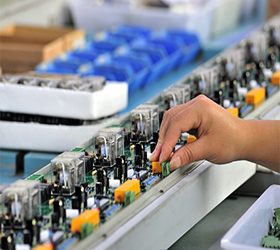 | ||
| Solar cell | Semiconductor | LCD | ||
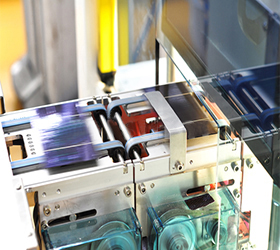 | 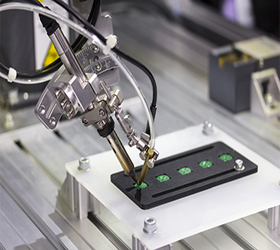 |  |
Precautions of Conveyor Belt
| Part Number | Surface Material Performance Table | ||||
| Type of Conveyor Belt | Chemical resistance of covering layer | Tolerance to animal and vegetable oils | Flame Retardance | Water and heat resistance | Static resistance |
| CFBSG | 〇 | 〇 |  | 〇 |  |
| CFBSWD | 〇 | 〇 |  | 〇 |  |
 Applicable 〇 May be corroded
Applicable 〇 May be corroded  Not applicable
Not applicable 
 Not suitable for unpackaged food transportation.
Not suitable for unpackaged food transportation.■ Belt appearance list of Conveyor Belt
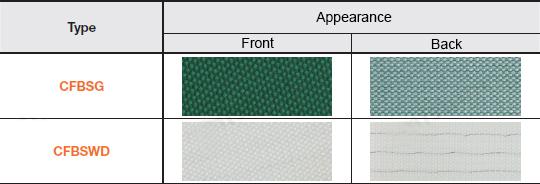
Related Products of Conveyor Belt
| Urethane round belt, welded joint product, free end product, hollow rope type | Conveyor Belt, Flat belt, with anti-running rib | Conveyor Belt, flat belt with anti-running rib and single row middle drive, φ30 | ||
 | 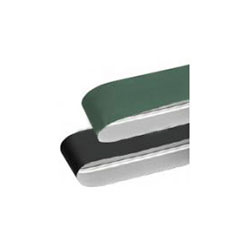 | 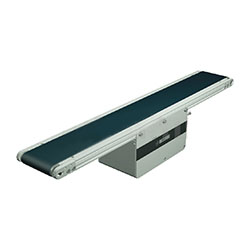 | ||
| Typical model of Conveyor Belt: MBT5-150 | Typical model of Conveyor Belt: HBLTDS350-4.5 | Typical model of Conveyor Belt: CVGP-100-1000-25-TA220-IM-25-H-A | ||
| Reasons for recommendation: rich specifications, excellent quality | Reasons for recommendation: anti-running rib design | Reasons for recommendation: anti-running rib models effectively prevent deviation |
Specification Table of Conveyor Belt
 to
to  .
.  |  Part Number Type Part Number Type | - |  Conveyor Belt Width W (mm) Conveyor Belt Width W (mm) | - |  Circumference Length L (m) Circumference Length L (m) | ||||
| CFBSG | - | 350 | - | 4.23 | |||||
■Specification Table of Conveyor Belt
| Part Number |  Circumference Length Ⅼ(m) Circumference Length Ⅼ(m) | |
 Type Type |  Conveyor Belt Width W (mm) Conveyor Belt Width W (mm)Can be specified down to 1mm increments | Can be specified down to 0.01m increments |
| CFBSG | 10~500 | 0.70~20.00 |
| CFBSWD | ||
 At the time of shipment, fitting processing has been performed on the ribbon belt.
At the time of shipment, fitting processing has been performed on the ribbon belt. Part Number
CAD Data download and 3D preview are not available because the part number has not yet been determined.
- *In order to open the CAD Data download and 3D preview screen, the part number must be fixed.
- Please confirm the part number from "Specification / Dimension"on the left side, and then perform the CAD Data Download / 3D Preview operation.
| Part Number |
|---|
| CFBSG-[10-500/1]-[0.7-20/0.01] |
| CFBSWD-[10-500/1]-[0.7-20/0.01] |
| Part Number | Minimum order quantity | Volume Discount | Days to Ship | Surface Cover Color | No. of Plies | Thickness (mm) | Circumference Length L (m) | Belt Width W (mm) |
|---|---|---|---|---|---|---|---|---|
| 2 Piece(s) | 18 Day(s) | [Green] Green | 1-ply | 0.5 | 0.7 ~ 20 | 10 ~ 500 | ||
| 2 Piece(s) | 18 Day(s) | White | 2-ply | 1.2 | 0.7 ~ 20 | 10 ~ 500 |
Loading...
Basic Information
| Belt Specifications | Excellent in Sliding Property | Surface Cover Material | Polyester Impregnated Woven Cloth | Surface Cover Shape | Flat |
|---|---|---|---|---|---|
| Tension Member Material | Polyester Canvas |
- The specifications and dimensions of some parts may not be fully covered. For exact details, refer to manufacturer catalogs .
Frequently asked question (FAQ)
- Question: In what state is the flat belt shipped?
- Answer: All are shipped after joints are processed for the belts.
- Question: Flat belt joint will be thicker than the body part, is it normal?
- Answer: It is normal, the belt joint will become thicker due to processing.
- Question: How is the circumference length of the flat belt calculated?
- Answer: Set the inner diameter as the circumference length.
- Question: What is the width tolerance of the flat belt?
- Answer: For products with a width of less than 400mm, the tolerance is ±1mm, and for products with a width of 401 to 500mm, the tolerance is ±1.5mm.
- Question: The flat belt joint is broken and the crack is flush, is it a joint processing problem?
- Answer: If the joint is poorly processed, it will generally break along the gap. Generally, the crack is flush and it is considered to be the fracture caused by excessive tension. It is recommended that the customer adjust the tension.


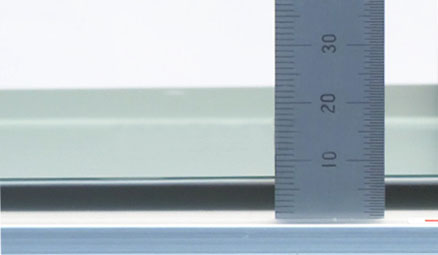
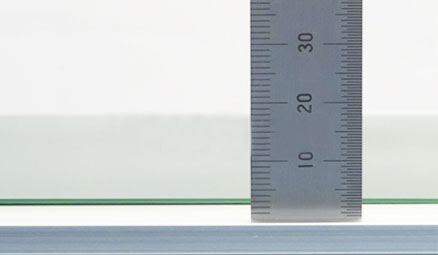
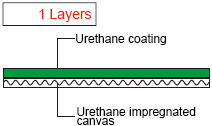

How can we improve?Bagaimana Kami bisa meningkatkan Pelayanan?
How can we improve?Bagaimana Kami bisa meningkatkan Pelayanan?
While we are not able to respond directly to comments submitted in this form, the information will be reviewed for future improvement.
Customer Privacy Policy Walaupun Kami tidak dapat langsung menjawab saran yang ditulis di lembar ini, informasinya akan kami review untuk peningkatan pelayanan dikemudian hari
Kebijakan Privacy
Thank you for your cooperation.Terima kasih atas kerjasama anda.
While we are not able to respond directly to comments submitted in this form, the information will be reviewed for future improvement.
Please use the inquiry form.
Customer Privacy Policy Walaupun Kami tidak dapat langsung menjawab saran yang ditulis di lembar ini, informasinya akan kami review untuk peningkatan pelayanan dikemudian hari
Silahkan pergunakan Forms Permintaan.
Kebijakan Privacy